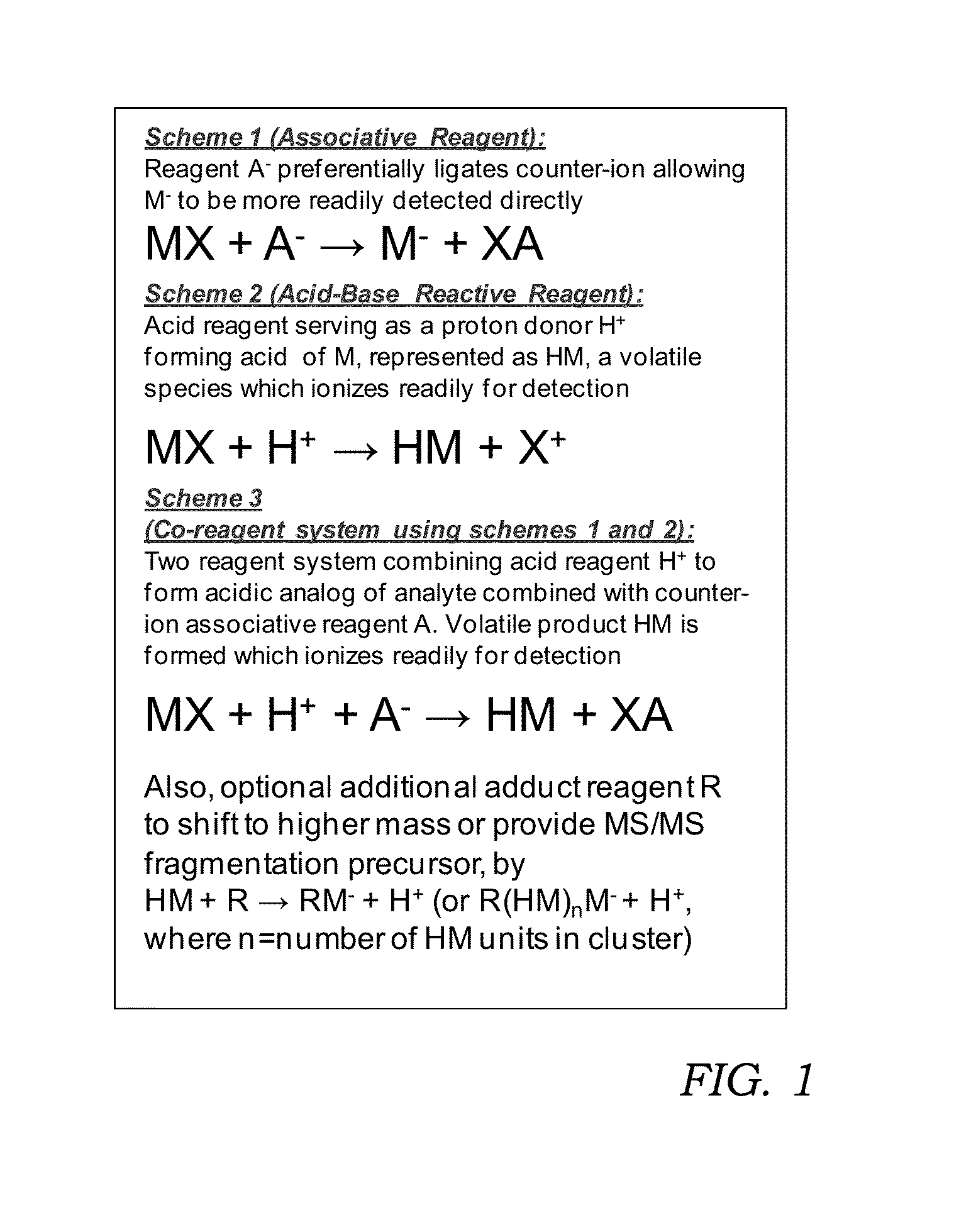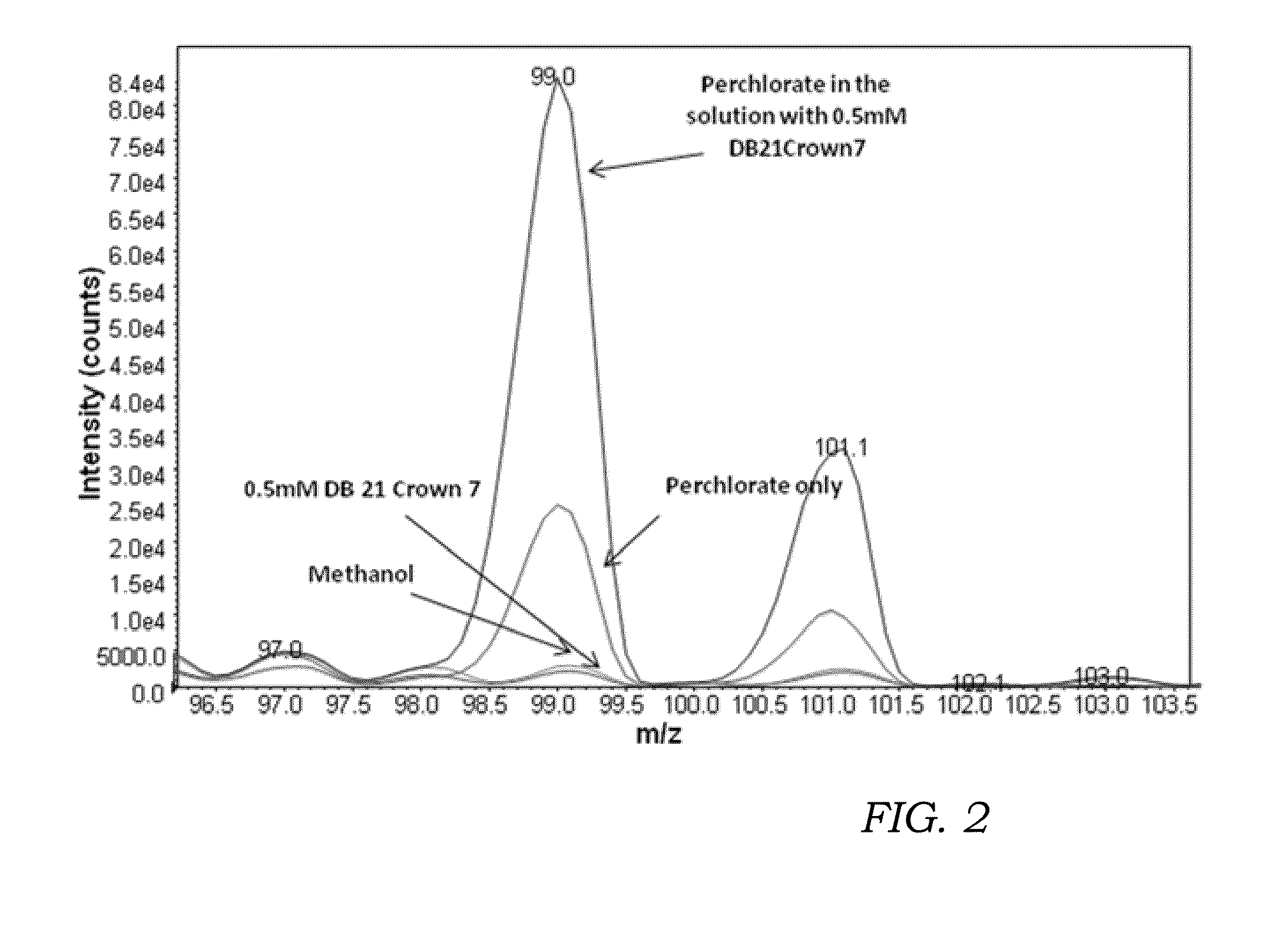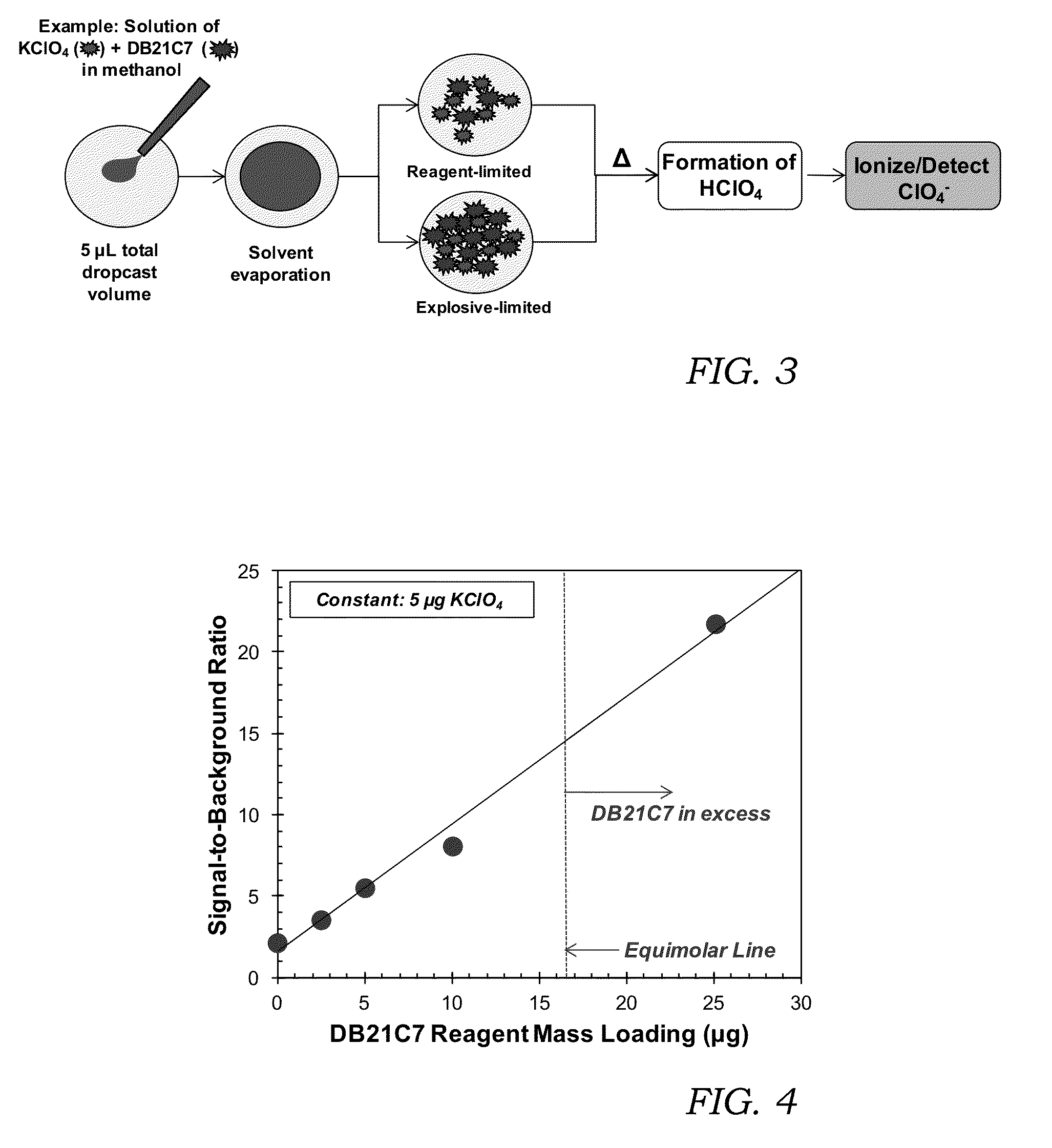Reagents for oxidizer-based chemical detection
- Summary
- Abstract
- Description
- Claims
- Application Information
AI Technical Summary
Benefits of technology
Problems solved by technology
Method used
Image
Examples
example 1
[0073]This invention has been reduced to practice and employed to detect potassium perchlorate via API mass spectrometry. As described earlier, in negative-mode atmospheric pressure chemical ionization, the ionization efficiency is extremely limited. In order to increase the amount of free perchlorate anion available for detection, an associative reagent was added. In these experiments, a solid reagent, namely dibenzo-21-crown-7 (CAS#14098-41-0), was added to the sample solution containing potassium perchlorate at equimolar concentrations in methanol. The perchlorate anion (35ClO4−) is present at m / z 99. We infused this solution into the APCI TurboV ionization source of a 4000QTrap MS (ABSCIEX) operating in negative polarity and detected the ionized perchlorate anion, ClO4−.
[0074]FIG. 2 is a single quadrupole negative mode mass spectra showing the use of an associative reagent (dibenzo 21-crown-7) to preferentially sequester the potassium counter-ion of potassium perchlorate to incr...
example 2
[0075]FIG. 3 is a flowchart of the TD-APCI method, including solid sample preparation, that was used to demonstrate the present invention. The process shown in FIG. 3 was used to demonstrate that the molar ratio between the reagent and the analyte determines the reaction efficiency, and by extension, the efficacy of the present invention. In cases where there is an excess of analyte (explosive), there is insufficient quantity of the reagent to react with all the explosive and the benefits of the present invention are limited. This circumstance is considered “reagent limited”. In order to ensure maximum reaction of the analyte (explosive) with the reagent, an excess of reagent is needed. In this circumstance the reaction is considered “explosive limited”. The preferred embodiment of this invention is to operate in the “explosive limited” regime, although some benefit is also realized in the “reagent limited” regime as well. The example shown in FIG. 3 is for potassium perchlorate and...
example 3
[0079]FIG. 8-10 show the desorption-temperature-dependent relationships of the MS instrument response from solid NaClO4 residue in the absence and presence of the crown ether reagent.
[0080]FIGS. 9 and 10 show TD-APCI-MS / MS instrument response versus thermal desorption temperature for sodium perchlorate (NaClO4) with and without dibenzo-21-crown-7 (DB21C7) reagent rendered as both background-subtracted signal intensity (FIG. 9) and signal-to-background ratio (FIG. 10) determined using data in FIG. 8, comparing 5 μg NaClO4 (blue diamonds) and 5 μg NaClO4 with 10 μg dibenzo-21-crown-7 (DB21C7) (red squares), where background is a clean silicon wafer substrate.
[0081]Signal continues to increase for NaClO4 with reagent at higher temperature (300° C.) as shown in the FIG. 10; however, at the expense of increasing background clutter from chemical off-gassing from the unpassivated aluminum ionization source. Neat NaClO4 did not produce a signal-to-background ratio over 2, while in the prese...
PUM
 Login to View More
Login to View More Abstract
Description
Claims
Application Information
 Login to View More
Login to View More - R&D
- Intellectual Property
- Life Sciences
- Materials
- Tech Scout
- Unparalleled Data Quality
- Higher Quality Content
- 60% Fewer Hallucinations
Browse by: Latest US Patents, China's latest patents, Technical Efficacy Thesaurus, Application Domain, Technology Topic, Popular Technical Reports.
© 2025 PatSnap. All rights reserved.Legal|Privacy policy|Modern Slavery Act Transparency Statement|Sitemap|About US| Contact US: help@patsnap.com



